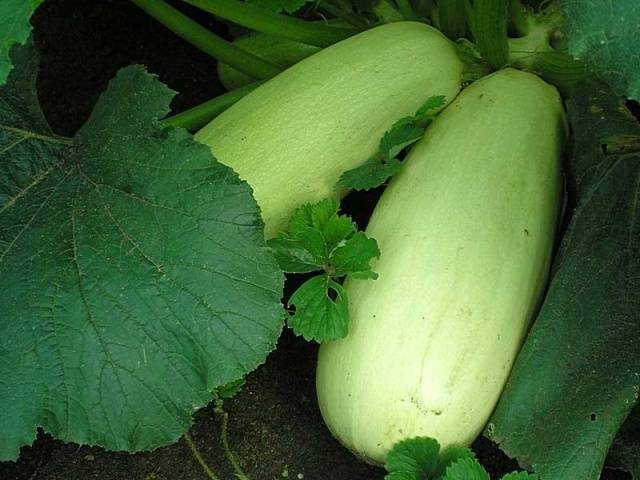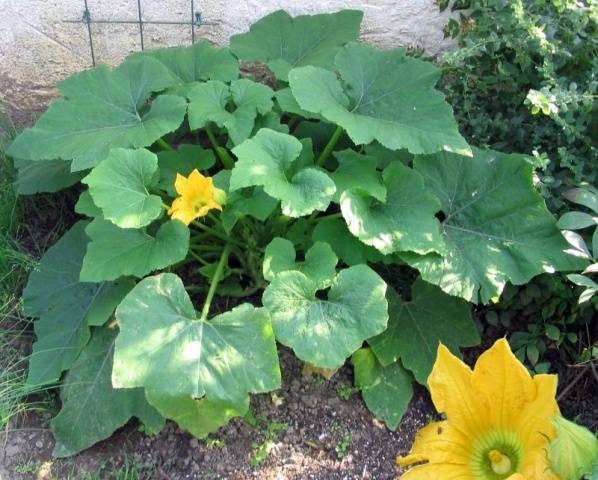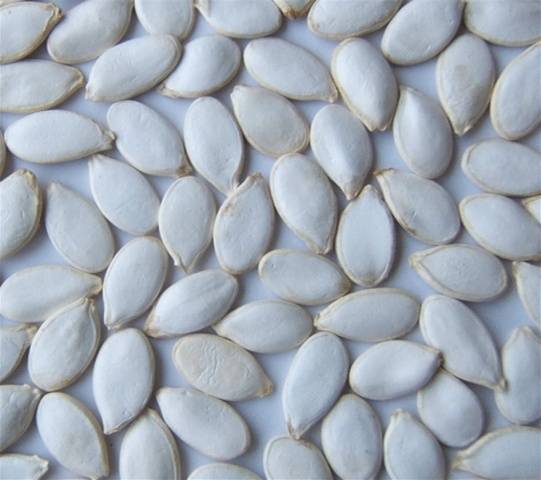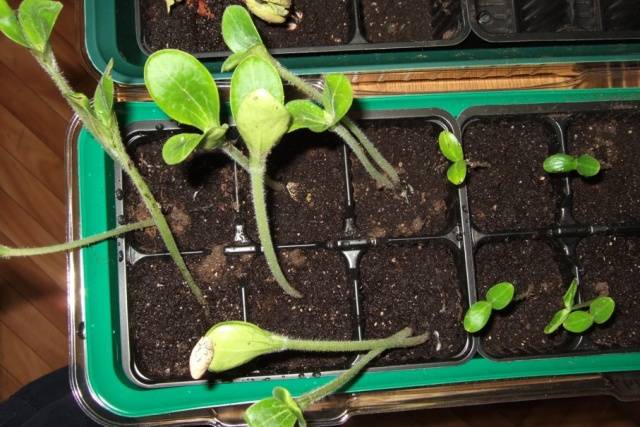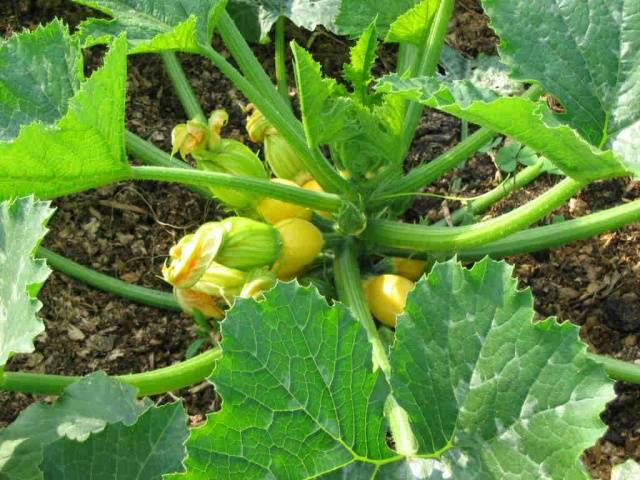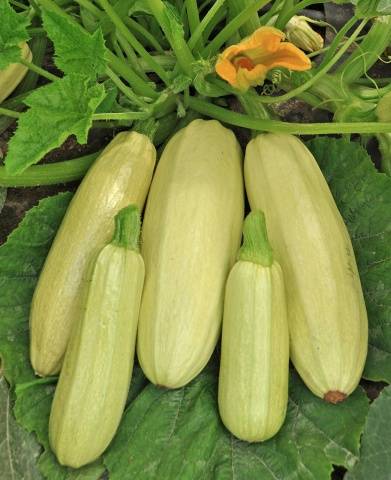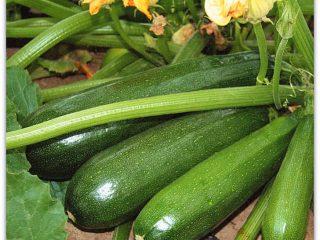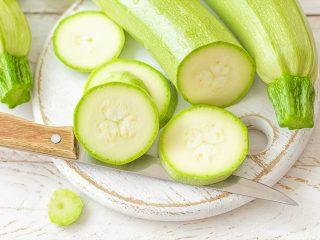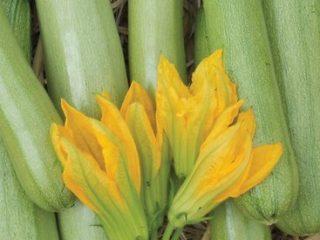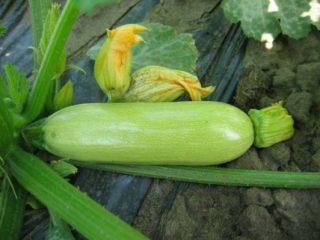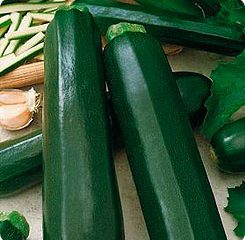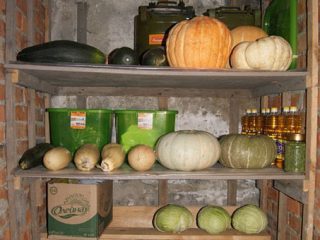Content
Zucchini Anchor is an early-ripening variety for growing in open ground. Cultivated throughout the Russian Federation. The maximum period for fruit ripening after the appearance of cotyledon leaves is 40 days. The weakly branching bush is compact.
Description
Vegetative characteristics of the crop | Endurance under low air temperatures and short-term drought |
|---|---|
Fruit ripening time | Early ripening variety |
Zoning of cultivation in open ground | Everywhere, except in the far north |
Preservation of fruits | Excellent shelf life, shelf life 2 months |
Disease resistance | Resistance to major damage |
Bush | Compact, slightly branched, leafy |
Productivity | 7–12 kg/m2 |
Transportation | Well tolerated |
Storage without processing of fruits | Long-term |
The resistance of the Yakor variety of zucchini to short-term drops in air temperature in May and September makes it easier to care for the plant and extends the growing season and fruiting of the bush. Seedlings under film covers are planted from the first days of May in central Russia.
The drought resistance of the Anchor variety makes it a favorite of summer residents, who are only on the site on weekends. Zucchini is not picky about growing conditions, but lack of attention when caring for the plant affects the quality of the fruit and early ripening.
Features of agricultural technology
Achieving technical ripeness from full shoots | 38–42 days |
|---|---|
Plant cultivation | Open ground, film shelters |
Period of sowing seeds/planting seedlings | Early/mid May |
Bush planting scheme | Sparse – 70x70 cm, dense – 60x60 cm |
Seed sowing depth | 3–5 cm |
Fruit harvest period | June–September |
Plant predecessors | Root vegetables, legumes, cabbage, nightshades |
Plant care | Watering, loosening, fertilizing |
Watering the bush | Abundant |
The soil | Light fertilized soils. Ph neutral, slightly alkaline |
Illumination | The plant prefers areas without shade |
Zucchini varieties Yakor are sown for seedlings in the first half of April (depending on the climatic characteristics of the region). Planting of mature plants is carried out 20–30 days after germination, in the 4-leaf phase, until the seedlings have outgrown.
Double selection of zucchini seeds of the Yakor variety is aimed at rejecting initially small, then half-empty seeds that float in the saline solution; they will not produce viable plants. The fruits of the Anchor variety of zucchini are rich in seeds, so there is plenty to choose from.
Forcing zucchini seedlings of the Anchor variety
Treated seeds of the Anchor variety are planted in combined soil: peat soil for seedlings has an acidic reaction, and it is not suitable for zucchini. A mixture of peat-based seedling soil with garden compost, deoxidized chalk or weathered lime will create the proper conditions for the development of zucchini seedlings.
Picking of seedlings is carried out at the cotyledon leaf stage. After transplanting, it is advisable to feed the seedlings with a solution of nitrogen fertilizers to enhance plant development. The mini-greenhouse is no longer closed - preliminary hardening of the zucchini is carried out.
Planting zucchini in the ground
Bush zucchini of the productive variety Anchor deserve attention when preparing beds. It is effective to create warm ridges in the fall - adding a layer of grass and foliage at least 10 cm thick under the fertile soil layer. Digging over a layer of poured foliage is less labor-intensive. The formation of compost will be delayed, the litter will not heat up, but soil aeration will improve.
The holes are prepared free, taking into account filling 50% of the volume with fresh compost before planting. Early planting of seedlings or sowing of zucchini seeds The Anchor obliges the gardener to protect the plants with covering material under the arches until the course of daily temperatures stabilizes.
Zucchini of the Anchor variety is a moisture-loving crop; drying out the roots has a negative impact on the harvest, so before planting we carry out moisture-charging watering. We mulch the soil of the holes, and loosen the dried soil to slow down the evaporation of moisture from the root horizons of the bush soil.
Harvesting
In order for vigorous zucchini from the bush to reach the table and preserved jars every 2-3 days, in addition to evening watering of the plant, you will have to feed it with aqueous solutions of mineral fertilizers and mullein infusions after 3 weeks. Foliar feeding of plants with a sprayer is carried out twice as often.
The fall of cold August dew inhibits the growth of zucchini fruits. Concerns arise about the safety of the harvest. You will have to place strips of non-woven material or a handful of pine needles under the Anchor fruits lying on the ground to prevent the fruits from rotting.
Description of the fruit
Weight of technically ripe fruit | 500–900 g |
|---|---|
Fruit shape | Wrong cylinder |
Fruit color | Light green at technical ripeness, Light yellow – testis |
Surface of the fetal cortex | Thin-barked, smooth |
Fruit pulp | Beige with yellowness |
Dry matter content of the fruit | 4,4% |
Fruit minerals | Potassium, calcium, phosphorus, iron |
